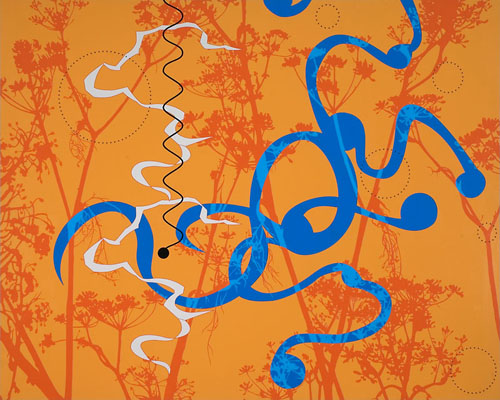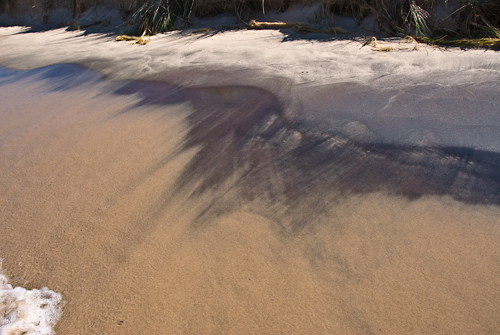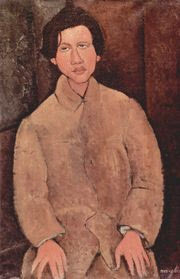
Oxygen, 48" x 60", 2010, acrylic & ink on wood panel
a multi-disciplinary dialog

19th century shtetl
In the book, Journey to a Nineteenth-Century Shtetl, Yekhezkel Kotik shares his memories of living in a shtetl not far from Soutine’s home of Smilovitchi in what is now Lithuania and what was once the part of Tsarist Russia that held on desperately to the edge of its borders with dirty fingernails. Of the superstitious beliefs of the townspeople, and there were many, there is this one in regard to death,
Parked about the place, doing a slow burn, has been a dubious project. It is a deconstruction of sorts wherein an ordered and functional format is scrambled.
It contains the elements of a compass including a round face. The letters designating the cardinal directions, however, are congregated in a pattern that is more self-referential than indicative of a greater orientation. The needle sits idly by, with no particular functional opportunities, or sense of direction.
Finely ground black sand overlies coarser light sand at a particular location along the shore of Lake Michigan.
Rough surf paints in black sand.
 more… »
more… »

Modigliani, Portrait of Soutine
The artist Chaim Soutine’s still life paintings of animals, what I prefer to call his carcass paintings, can be unsettling, especially given the fact that Soutine was known to have never worked from memory, but rather used live, or dead, models for all his works.
Nearly all of Soutine’s art can be jarring to the viewer for a variety of reasons; his use of color, his lines, his brushstrokes and overall style as well as his subject matter are startling, but after our initial response what are we to make of these works? And what is it that Soutine was trying to say?
I’m back in Portland, Oregon, from my six-week Nevada sojourn. But I haven’t unpacked my big linen canvases yet. I am almost afraid to do so, fearing that they are completely banal, hence total failures (banality is worse for me than bad).
In part, this reluctance has to do with various coming home challenges — burst pipes, unreliable contractors, relatives using the house in unexpected and unnerving ways. But in part, it’s simply because I don’t know what I did, although I am fairly certain I did not manage to un-orient, and my feeble attempts merely feel like they may be so feeble as to look feeble-minded.
Well, you see where I am. I began last February and March, 2009, living with the desert and Beatty, Nevada, painting small masonite panels, getting to know the territory and its inhabitants. This November sojourn, however, was more limited and almost entirely devoted to the Amargosa, which became more and more fascinating as I spent 6-8 hours a day, alone with the scene, for the full month of November.
So here are photos of the seven panels, plus the full panorama. These were taken as the panels were still on the wall of the Red Barn, under under limited lighting conditions. The exception is the full panorama, which was lit andphotographed by professional photographer, David Lancaster.
I am showing these in part to bolster my own sense of dignity and/or bravado.
 Unoriented Amargosa (panel 1, east), 4′ x 5′, oil on linen, 2009
Unoriented Amargosa (panel 1, east), 4′ x 5′, oil on linen, 2009